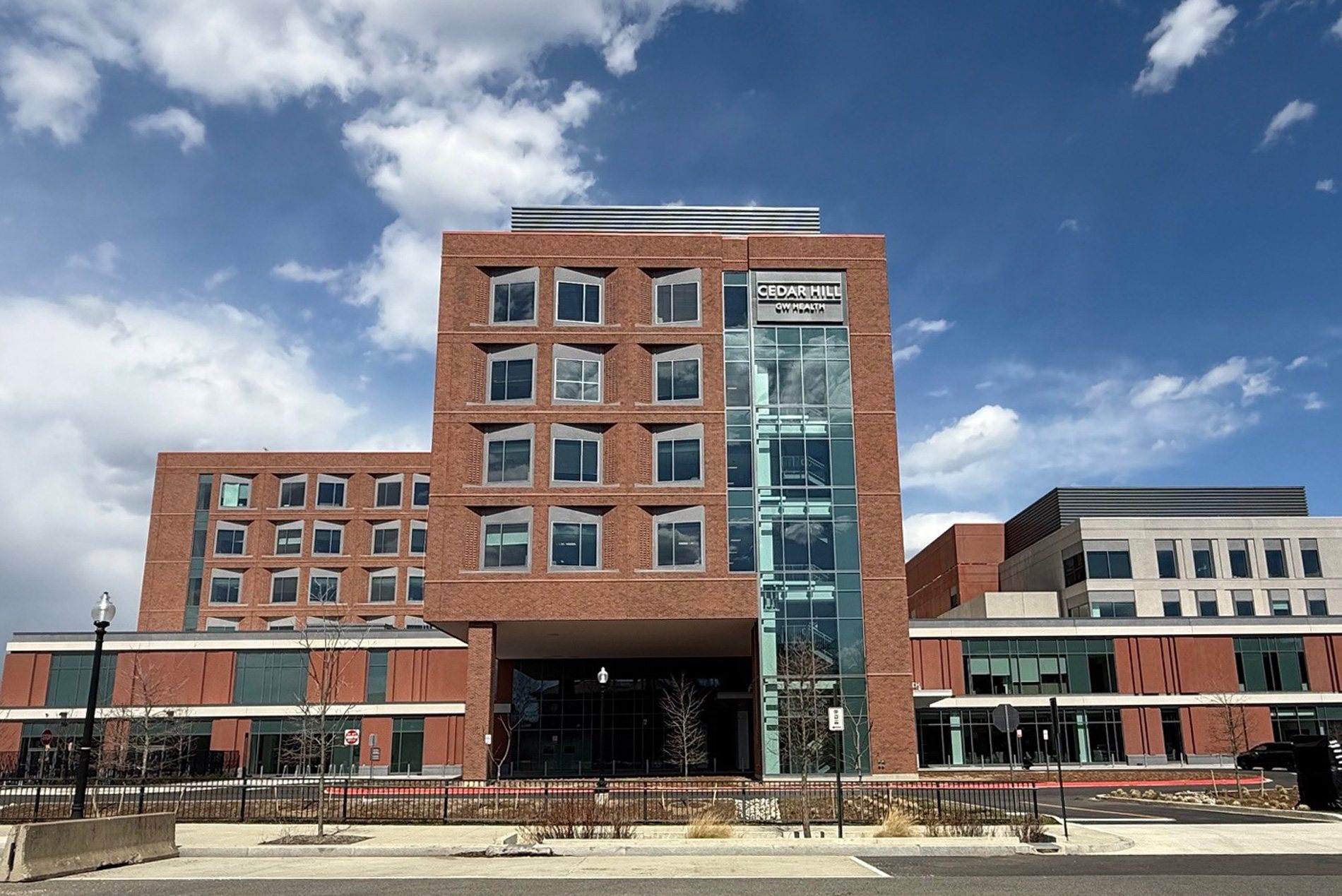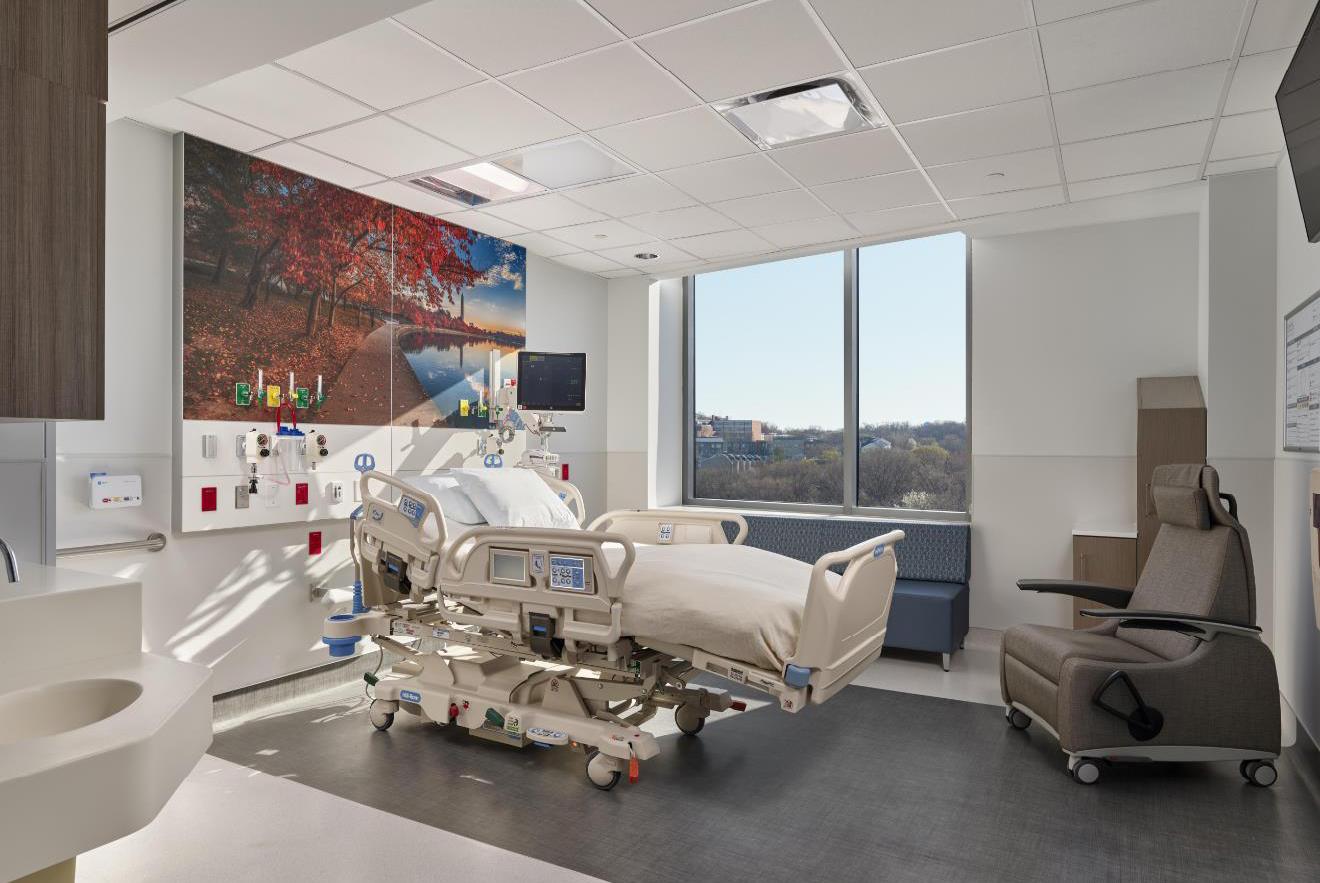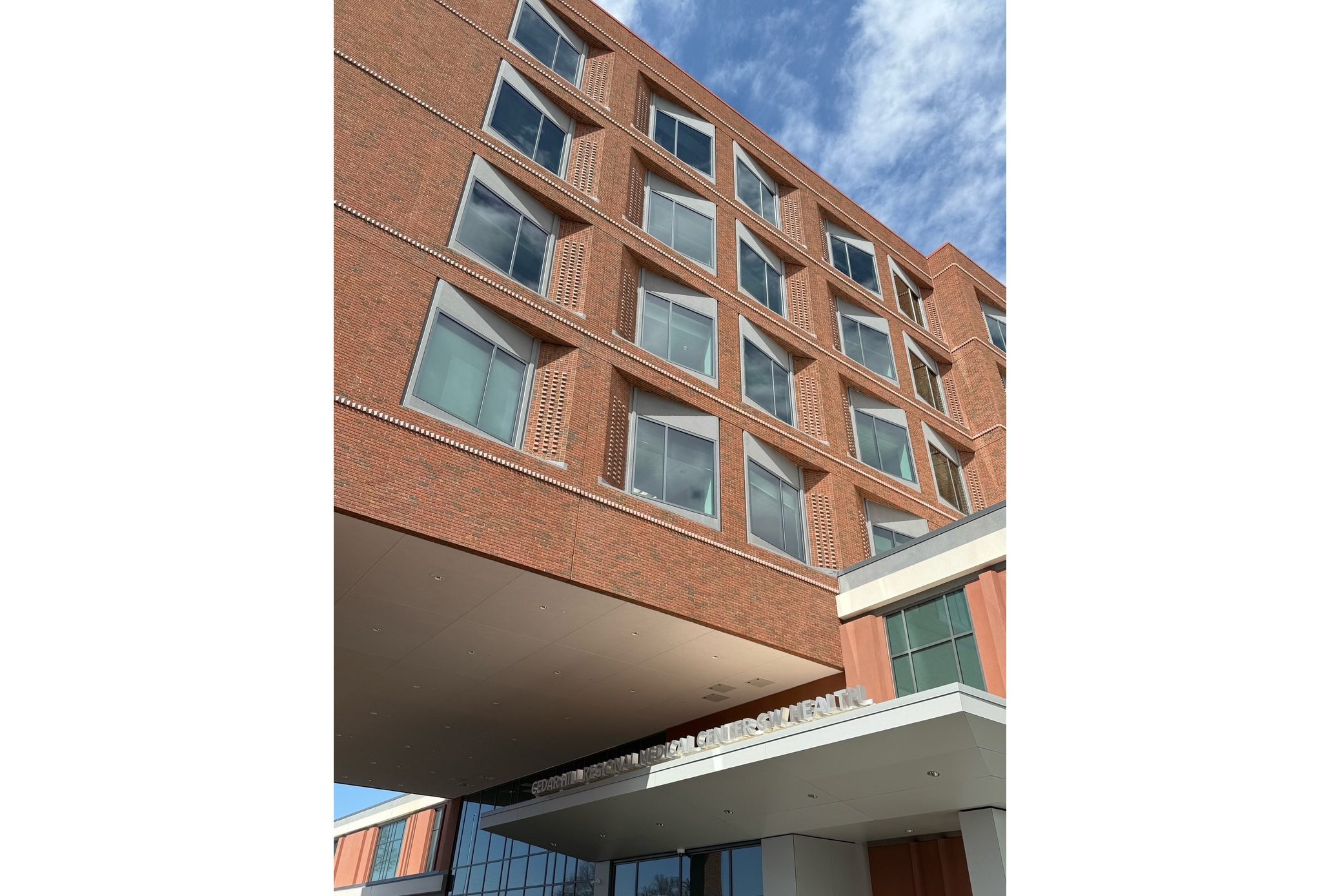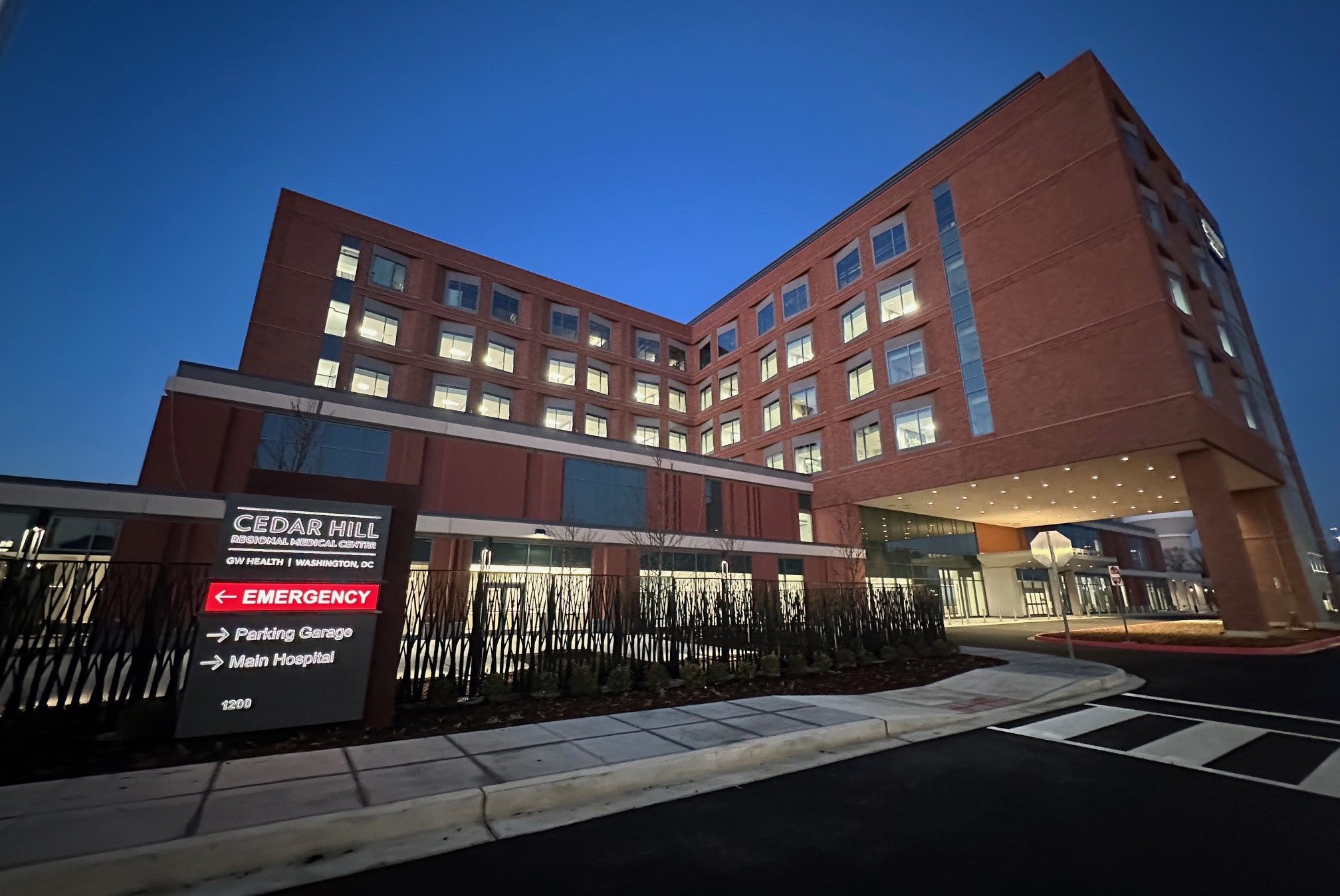The opening of a new full-service hospital in Washington, D.C., sets new benchmarks for equitable healthcare access, sustainable design and resilient urban infrastructure.
Cedar Hill Regional Medical Center GW Health celebrated its official opening today—marking a significant milestone in Washington, D.C.’s healthcare services and programming. As the first full-service hospital built in the District in over 25 years, it reflects a transformational approach to healthcare access, design and sustainability.
Designed by HOK in collaboration with McKissack & McKissack, the facility is a cornerstone of a broader integrated healthcare network, aiming to enhance care in Wards 7 and 8. Located on the historic St. Elizabeths East Campus, the 406,696-sq.-ft. hospital was developed as part of a public-private partnership with the District of Columbia, Universal Health Services (UHS) and George Washington University Hospital.
Designed for Equity and Accessibility
 Cedar Hill Regional Medical Center GW Health is more than a hospital—it is a response to longstanding health disparities in the community. The facility integrates a new urgent care center, opened in 2022, with another urgent care center planned, and connects with existing providers to create a robust healthcare system east of the Anacostia River.
Cedar Hill Regional Medical Center GW Health is more than a hospital—it is a response to longstanding health disparities in the community. The facility integrates a new urgent care center, opened in 2022, with another urgent care center planned, and connects with existing providers to create a robust healthcare system east of the Anacostia River.
Key program elements include:
- 136 inpatient beds, with the ability to expand to 184.
- Adult and pediatric emergency departments.
- A verified trauma center.
- Maternal health and delivery services.
- A 16-bed behavioral health inpatient unit.
- Ambulatory pavilion with physician offices and clinics.
- A 500-car parking garage and a helipad for emergency transport.
The hospital was designed to be flexible and adaptable, ensuring it can evolve with future healthcare demands. Clinical spaces support team-based care models, while dedicated areas for mental health, trauma care and maternal health reflect a holistic approach to patient needs.
A Human-Centered Healing Environment
Guided by evidence-based design principles, the architecture promotes wellness, safety and operational efficiency. A focus on natural light, calming materials and biophilic elements ensures a patient experience that reduces stress and enhances healing. Key design strategies include:
- Indoor-outdoor connectivity, with green spaces that provide respite for patients, families and staff.
- Trauma-informed design principles, incorporating layouts and finishes that foster calm and security.
- Flexible patient rooms, designed to accommodate different levels of care without requiring relocation.
- Wayfinding clarity, with intuitive circulation paths to improve efficiency and patient comfort.
- Artwork inspired by local culture and commissioned from District and Maryland artists.
The interiors, designed in collaboration with Design Studio Blue and McKissack & McKissack, draw inspiration from D.C.’s natural and cultural landscape. The use of warm, neutral palettes paired with vibrant community-inspired art creates an environment that is both inviting and culturally responsive.
The hospital’s architectural form responds to both its urban and historic context, maintaining a human scale while integrating state-of-the-art medical functionality. The façade features a contemporary design with architectural nods to the historic St. Elizabeths campus, incorporating a rhythmic arrangement of windows and materials that balance openness with privacy.
Inside, the hospital is organized around circulation pathways that reduce patient stress and enhance operational efficiency. Public spaces, including waiting areas and family lounges, are strategically positioned near natural light sources to promote calm and relaxation. The use of prefabricated components allowed for greater efficiency in construction, ensuring that high-performance building systems were seamlessly integrated without compromising design integrity.
Sustainability and Resilience in Healthcare
Cedar Hill Regional Medical Center GW Health is pioneering sustainable hospital design in the District. Complying with the DC Green Building Act, it is on track to become the first new full-service hospital in D.C. to achieve LEED Healthcare Silver certification. The facility incorporates:
- 40% restored green space, improving stormwater management, biodiversity and patient access to nature.
- A soon to be installed 900 kW solar canopy, funded by DC Solar for All, providing renewable energy to low-income households.
- Energy-efficient building systems, including advanced envelope performance and commissioning.
- Microgrid-ready infrastructure, ensuring long-term resilience against power disruptions.
A Blueprint for the Future of Urban Healthcare
The opening of Cedar Hill Regional Medical Center GW Health represents an extensive investment in healthcare architecture—one that prioritizes access, sustainability and patient-centered care.
“This project demonstrates how healthcare design can serve as a catalyst for equity and resilience,” said Mitchell Collin, director of Healthcare at HOK. “By integrating best practices in flexibility, wellness and sustainability, we’ve helped create a hospital that meets the needs of today while being adaptable for the future. We are so proud to be a partner in bringing healthcare access and equity to the District and its residents.”
